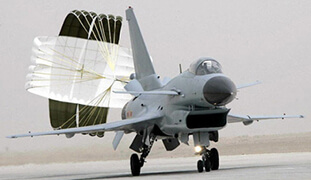
Inertial Navigation Systems (INS) are critical for determining the position, orientation, and velocity of moving objects without relying on external references. They are widely used in aerospace, marine, and terrestrial navigational applications. Here are the primary sensor solutions that make up an INS:
-
Accelerometers:
- Function: Measure linear acceleration along one or multiple axes.
-
Types:
- MEMS (Micro-Electro-Mechanical Systems) Accelerometers: Often used in consumer electronics and some lower-cost industrial applications.
- Quartz Accelerometers: Known for their stability and low bias drift, typically used in precision applications.
- Servo Accelerometers: Provide high accuracy and are often used in high-end industrial and aerospace applications.
-
Gyroscopes:
- Function: Measure angular velocity around one or multiple axes.
-
Types:
- Ring Laser Gyroscopes (RLG): Provide high precision, widely used in aerospace.
- Fiber Optic Gyroscopes (FOG): Offer robustness and flexibility, suitable for various applications.
- MEMS Gyroscopes: Used in many commercial and some lower-cost industrial applications due to their compact size and lower power consumption.
- Dynamically Tuned Gyroscopes (DTG): Offer good performance for certain specialized applications.
-
Magnetometers:
- Function: Measure the strength and direction of the magnetic field to determine orientation relative to the Earth's magnetic field.
- Usage: Often used in conjunction with accelerometers and gyroscopes to provide complete orientation data. Common in consumer electronics and some navigation systems for heading information.
-
Barometers and Altimeters:
- Function: Measure atmospheric pressure to determine altitude.
- Usage: Used in aviation and some terrestrial applications to provide altitude information, which complements the 3D position data from accelerometers and gyroscopes.
-
Supporting Electronics:
-
Integrated Circuits (ICs) for Signal Processing:
- ADCs (Analog to Digital Converters): Convert the analog signals from sensors to digital data for further processing.
- Microcontrollers or DSP (Digital Signal Processors): Process sensor data and run algorithms to compute position, velocity, and orientation.
- Power Management ICs: Ensure stable power supply to all sensors and electronic components.
-
Integrated Circuits (ICs) for Signal Processing:
-
Data Fusion Algorithms:
- Kalman Filter: A commonly used algorithm in INS to combine data from various sensors to provide accurate and stable estimates of position, velocity, and orientation.
- Complementary Filter: A simpler alternative to the Kalman filter, useful in some applications for sensor fusion.
- Machine Learning Algorithms: Increasingly being explored to enhance accuracy and robustness in complex environments.
-
GPS Integration (GNSS INS):
- Function: Combines INS with GPS (Global Positioning System) to correct for drift and enhance long-term accuracy.
- Usage: Provides reliable navigation solution even in GPS-denied environments for a specified duration.
-
Environment-Specific Enhancements:
- Temperature Compensation: Sensors are often affected by temperature variations, so high-precision systems may include temperature sensors and compensating algorithms.
- Vibration Isolation: In high-vibration environments, vibration isolators help to reduce the impact on sensor readings.
Popular INS Solutions Providers:
-
Honeywell:
- Offers high-end INS solutions for aerospace and defense.
-
Northrop Grumman:
- Provides advanced INS technologies for various applications, including aviation and maritime.
-
Bosch Sensortec:
- Known for MEMS sensors, widely used in consumer electronics and automotive.
-
Analog Devices:
- Delivers a wide range of MEMS sensors and specialized ICs for signal processing.
-
KVH Industries:
- Provides fiber optic gyroscope-based INS solutions.
-
Trimble:
- Offers integrated GNSS/INS solutions for precise positioning and navigation.
By using a combination of these sensors and technologies, an INS can provide accurate and reliable navigation data for a wide range of applications.
